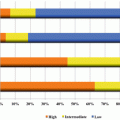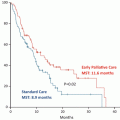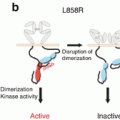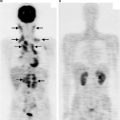Adverse event
Grade 1
Grade 2
Grade 3
Grade 4
Rash acneiform
Papules and/or pustules covering<10 % BSA, which may or may not be associated with symptoms of pruritus or tenderness
Papules and/or pustules coveting 10–30 % BSA, which may or may not be associated with symptoms of pruritus or tenderness; associated with psychosocial impact; limiting instrumental ADL
Papules and /or pustules coveting>30 % BSA, which may or may not be associated with symptoms of pruritus or tenderness; limiting self-care ADL; associated with local superinfection with oral antibiotic indicated
Papules and/or pustules coveting any % BSA, which may or may not be associated with symptoms of pruritus or tenderness and are associated with extensive superinfection with IV antibiotics indicated; life-threatening consequences
Rash macula-papular
Macules/papules covering <10 % BSA with or without symptoms (e.g., pruritus, burning, tightness)
Macules/papules covering 10–30 % BSA with or without symptoms (e.g., pruritus, burning, tightness); limiting instrumental ADL
Macules/papules covering >30 % BSA with or without symptoms; limiting self-care ADL
–
Table 16.2
University of Texas M.D. Anderson Cancer Center Management Scheme for EGFR-TKI-related dermatologic toxicity [14]
Toxicity grade | Macular rash | Pustular rash | Dry skin | Pruritus | Ulcerative lesion |
|---|---|---|---|---|---|
Grade 1 | Topical hydrocortisone cream/lotion | Clindamycin gel (for isolated lesions) or lotion (for scattered lesions) | _ | _ | – |
Grade 2 | Oral methylprednisolone, if> body lesions or hydrocortisone, if<2 body lesions | Minocycline 100 mg or doxycycline 100 mg orally twice a day for 10–14 days | Apply emollient twice a day | Topical antihistamine or diphenhydramine 25–50 mg orally every 6 hours as needed | _ |
Grade 3 | Oral methylprednisolone | Minocycline 100 mg or doxycycline 100 mg orally twice a day for 10–14 days | Apply emollient twice a day | Diphenhydramine 25–50 mg or hydroxyzine 25–50 mg orally every 6 hours as needed | Silver sulfadiazine ointment or dermatology consult |
Dermatology consult | |||||
Grade 4 | Dermatology consult | ||||
Yamazaki N. et al. demonstrated the algorism of treatments for dermatologic toxicities on the basis of Japanese perspectives (Table 16.3) [12]. They recommend the medium or strong steroid lotion to the acneiform rash on the face and head because of better permeability into the skin compared with those of ointment.
Table 16.3
Clinical management of dermatological toxicities induced EGFR-TKI: Japanese perspective [12]
Acne-like rash | Seborrheic dermatitis | Dry skin | Nail change | Nail changes (paronychia) |
|---|---|---|---|---|
Topical agents | Topical agents | Topical agents | Cleanser | Surgical treatment |
Nonsteroid | Nonsteroid | Moisturizing agents | Cold compress | Partial resection/removal of the nail |
Ibuprofen piconol | Ibuprofen piconol | Mucopolysaccharide | ||
Steroids | Steroids | Polysulfuric acid ester | ||
Mild to very strong | ||||
Antibiotics | Mild to very | Urea | ||
Systemic agents | ||||
Tetracycline hydrochloride | Vitamins | Steroids | Removal of the nail | |
Nadifloxan | Riboflavin tetrabutylate | |||
Pyridoxal 5-phosphate | ||||
Systemic agents | ||||
Vitamins | ||||
Riboflavin tetrabutylate | ||||
Pyridoxal 5-phosphate | ||||
Antibiotics | ||||
Minocycline hydrochloride | ||||
In case of severe itching | In case of secondary infection | |||
Antiallergic agents | Antibiotics | |||
Antihistamine | Minocycline hydrochloride | |||
Steroids |
16.3 Managements of Interstitial Lung Disease (ILD)
All drugs are potentially able to induce ILD in various degree and severity. The development of ILD subsequent to chemotherapeutic agents has been documented for many years, with the use of standard cytotoxic drugs for treatment of NSCLC being associated with ILD at a prevalence of up to 5 % [15]. ILD is the most serious adverse effect of molecular-targeted drugs with relatively high incidence compared to cytotoxic drugs. The frequency of gefitinib-related ILD is higher in Japanese than Western Caucasians implying that Japanese may have an increased genetic susceptibility to ILD [16]. After introduction of gefitinib licensed in Japan for the inoperable or recurrent non-small cell lung cancer in July 2002, many of life-threatening ILD were reported and became an object of social concern. Although EGFR-TKIs are generally well tolerated with mild or moderate skin reactions, gastrointestinal disturbances, and elevations in liver enzymes, the frequency of ILD was 5.8 % and the mortality rate 38.8 % among the patients with ILD according to Reports on Iressa Tablets 250 prospective study [17]. The prevalence of EGFR-associated ILD is generally estimated 3–5 % and mortality of 1–2 % in all patients [18].
Risk factors for ILD and predictive factors should be initially evaluated. The incidence of ILD increases in patients with a performance status (PS) of 2 or more, a history of smoking, a pre-existing interstitial pneumonia at the time of initial administration of the drug, and a history of prior chemotherapy. Regarding the factors predicting a fatal prognosis, a higher mortality rate was suggested for patients with a male gender, a PS of 2 or more, high age, smoking history, pre-existing ILD, reduced lung volume, and extensive areas of adherent to the pleura [17].
Erlotinib is another EGFR-TKI approved in Japan in 2007. The all-case surveillance study conducted after approval revealed that ILD developed in 4.5 % (158/3488 cases) and mortality rate from ILD was 34.8 % (55/158 cases) [20]. ILD developed most often in the first 2 weeks after starting erlotinib administration. Risk factors of ILD were similar those of gefitinib. A multivariate analysis demonstrated that the previous ILD, smoking history, concomitant or previous lung infection, and PS of 2 or more were significant risk factors for development of ILD [20, 21]. Patient harboring EGRF-receptor mutation is considered a good candidate for EGRF-TKI. The poor PS or aged patients who are not indicated for cytotoxic chemotherapy may be able to receive molecular-targeted therapy; however, it should be noted that such patients may be at high risk for development of ILD.
The prevalence of gefitinib-induced ILD differed markedly according to sex and smoking status ranging from 0.4 % in females with no history of smoking to 6.6 % in male smokers [16]. Female sex and the absence of a history of smoking are both predictive factors with a lower risk for ILD, higher response rate, and longer survival. They provide important insight into individual risk-benefit assessment. Patient selection on the basis of this favorable profile will not only increase the clinical benefit of treatment with gefitinib but also reduce the risk of development of this life-threatening toxicity.
It is often difficult to diagnose drug-induced ILD in lung cancer patient. Patients with advanced lung cancer tend to have pre-existing lung disease and respiratory tract infections as well as the progressive malignancy like carcinomatous lymphangitis with high prevalence. There are no specific biomarkers, radiographic findings, or pathological patterns for ILD. Diagnosis of drug-induced ILD relies of rigorous exclusion of all other differential diagnoses. As for the treatment of ILD, the principal management is early detection and discontinuation of the causal drug, and if necessary the administration of corticosteroids is indicated. Exceptionally, mTOR inhibitor is often continuing after ILD appears in patients with asymptomatic ILD [22]. All patients treated with molecular-targeted therapy should be warned to promptly report symptoms such as cough and dyspnea.
The response to corticosteroid therapy depends on the pathological pattern of ILD. Physicians should learn the classification of idiopathic interstitial pneumonia including idiopathic pulmonary fibrosis (IPF), nonspecific interstitial pneumonia (NSIP), cryptogenic organizing pneumonia (COP), desquamative interstitial pneumonia (DIP), and acute interstitial pneumonia (AIP) [23]. IPF-like pattern is relatively rare in drug-induced ILD. AIP is a diffuse alveolar damage (DAD) as pathological findings have rapid aggravate and poor prognosis. Among the classification of interstitial pneumonia, OP, eosinophilic pneumonia, and hypersensitivity pneumonia are expected to show a good response to corticosteroids [24].
Since ILD-associated molecular-targeted drugs usually emerge within 4 weeks after initiation of the therapy, the meticulous monitoring is required for the duration period. When the ground-glass opacity consisted of ILD appears on chest CT of patients treated by a molecular-targeted drug, it is recommended to discontinue drug except mTOR inhibitors. ILDs induced by EGFR-TKIs often develop AIP (DAD) type and rarely recovered by cessation of the causal drug. If the patients developed DAD pattern with hypoxia of PaO2 less than 80 Torr, corticosteroid is recommended for the treatment. In the case of severe hypoxia of less than 60 Torr or rapidly progressive pattern, steroid pulse therapy consisted with methylprednisolone at dose of 500–1000 mg/day for 3 days followed by prednisolone at a dose of 0.5–1.0 kg/day is recommended. Algorism of managements is schemed on Table 16.4. There is no evidence concerning efficacy of immunosuppressive drugs such as cyclosporine for nonresponder to corticosteroid. Administration of the causal drug after resolve of ILD again is generally not recommended.
Table 16.4
Management of interstitial lung disease associated with molecular target drug other than mTOR inhibitor [25]
Grade | Therapy | Re-administration of the drug |
|---|---|---|
Mild: | Discontinuation of the drug | Administration of the drug is not recommended after resolve of ILD other than exceptional case |
PaO2>80 Torr | Meticulous observation and corticosteroid, if necessary | |
asymptomatic | ||
Moderate: PaO2<60 Torr symptomatic | Discontinuation of the drug | |
Prednisolone 0.5–1.0/kg/day | ||
Severe: | Discontinuation of the drug | Administration of the drug is not recommended after resolve of ILD |
PaO2 <60 Torr | Methylprednisolone 500 mg−1000 mg/day | |
DAD pattern |
16.4 Managements of Liver Injury
Anticancer drugs are associated with risks of drug-induced liver injury and hepatitis B virus (HBV) reactivation which may sometimes be serious and resulting in life-threatening liver failure [26]. It is necessary to make differential diagnosis of liver injury including tumor progression in the liver, obstructive jaundice, viral hepatitis, and other drug-induced liver toxicities. Although severe liver injury is generally rare in molecular target drug compared to cytotoxic agents, asymptomatic increase in liver transaminases is often observed in patients treated by gefitinib and erlotinib [27]. Patients should be monitored regularly for changes in liver functional test (e.g., transaminase, bilirubin, alkaline phosphatase). Liver injury is usually recovered after discontinuation or dose reduction of the drug, and the intervention for liver injury is not often required other than exceptional case [28]. There is a report that corticosteroid is effective for allergy-mediated liver injury caused by a molecular-targeted drug [29].
Dose reduction methods are not established for patients with liver injury. Practically, a reduction of daily dose or administration in every other day is empirically performed.
Reactivation of HBV is also relatively rare in molecular target drugs except for anti-CD20 antibody such as rituximab and imatinib [26]. Physician should evaluate the liver function and screening of HBV status at baseline of the treatment. Patients with HBsAg positive or HBsAg negative while HBcAb and/or HBsAb positive are at a high risk for HBV reactivation so they should be managed according to the guideline for preventing HBV reactivation developed by the Japan Society of Hepatology [30].
16.5 Managements of Nausea and Vomiting
Nausea and vomiting are common adverse effects of anticancer drugs. Regarding with molecular-targeted drugs, nausea and vomiting are also frequent; however, the degree is relatively low. According to the National Comprehensive Cancer Network guideline, most molecular-targeted drugs are classified as low emetogenic except for imatinib and crizotinib which are classified as moderate emetogenic [31]. Antiemetic medicines such as metoclopramide, prochlorperazine, or histamine 2 receptor antagonist or proton pump inhibitor are used for preventing and treating nausea and vomiting.
16.6 Managements of Gastrointestinal Toxicity
Gastrointestinal adverse events are frequently observed in patients receiving molecular-targeted drugs. The grades of toxicity are usually not so high that the majority of patients with NSCLC treated by oral EGFR-TKI do not require treatment interruption. Diarrhea of any grade were experience in 83 % of patients treated with erlotinib, 27 % of patients treated with gefitinib, and 76 % of patients treated with afatinib. Mucositis and stomatitis were experienced in 14.5 %, 6 %, and 17 % of patients treated with erlotinib, gefitinib, and afatinib, respectively [32]. The mechanism of diarrhea caused by EGFR-TKI remains unclear. While it is supposed to be resulted from the damage of gastrointestinal cell on which EGFR are located, multiple factory causes alter gut motility, colonic crypt damage, changes of intestinal microflora, and altered transport in the colon [33]. In the cases of severe gastrointestinal adverse events with fluid and electrolyte losses, dehydration, electrolyte imbalances, and renal insufficiency consequent on diarrhea may ill impact on patient’s quality of life.
Stay updated, free articles. Join our Telegram channel

Full access? Get Clinical Tree







